Saint Therese of the Child Jesus
of the Holy Face
Sketches of St. Therese entering Lisieux Carmel on April 9, 1888 - from the Web site of the Archives of the Carmel of Lisieux
After I published the photo essay of St. Therese entering Carmel, I discovered at the Web site of the Archives of the Carmel of Lisieux the section "St. Therese's Life in Pictures" (103 documents, many never published before, depicting sixty scenes in Therese's life). I post below several sketches of Therese's entrance day. At the Archives site the images are a little bigger and are accompanied by text from Therese and some details; to visit them there, please click on the images below.
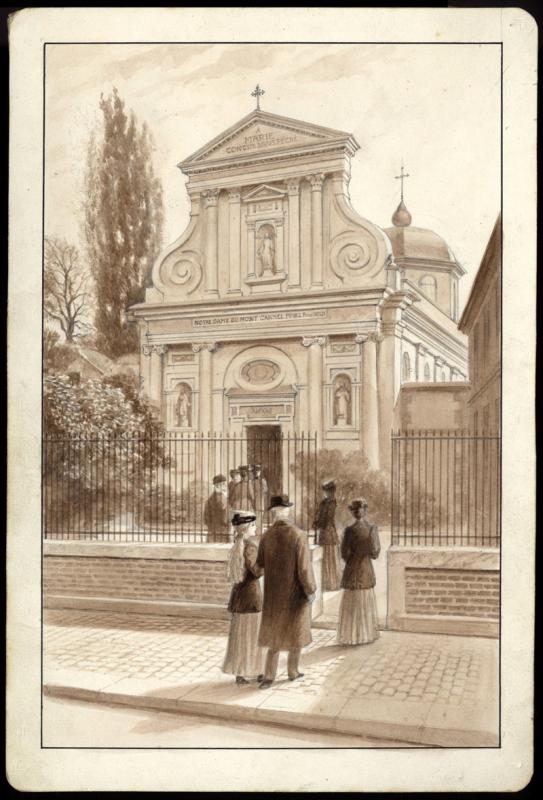 The Martin and Guerin families approach the chapel of the Carmel on the day of Therese's entrance. By Charles Jouvenot.
The Martin and Guerin families approach the chapel of the Carmel on the day of Therese's entrance. By Charles Jouvenot.
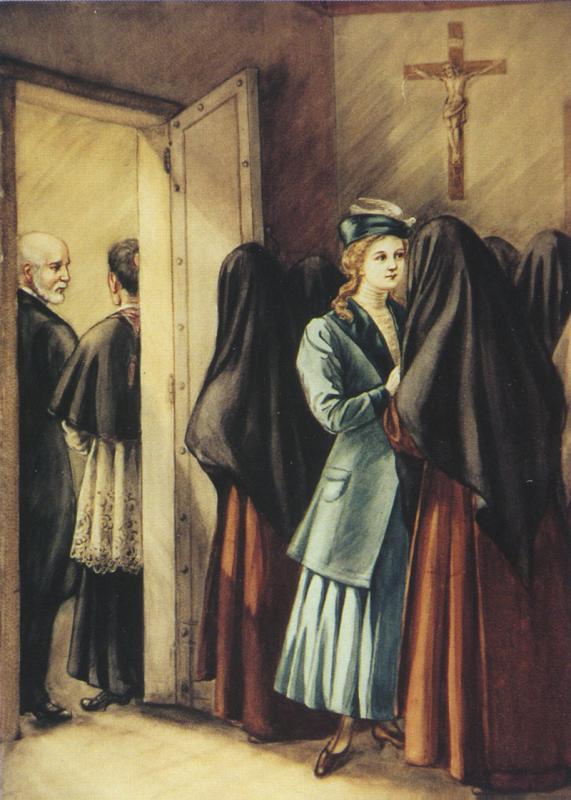 Therese has just stepped into the enclosure. Her father is outside with Canon Delatroette.
Therese has just stepped into the enclosure. Her father is outside with Canon Delatroette.
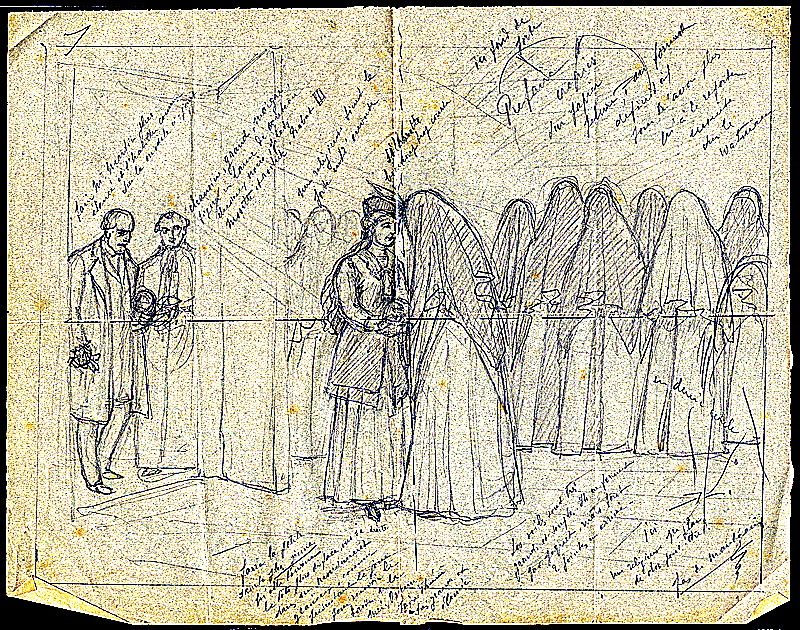 Therese's first moments in the enclosure. Unused sketch.
Therese's first moments in the enclosure. Unused sketch.
Note: to see the above sketch at the Archives site, click on the image above. Then click on the highlighted word "sketch' on the page where you land.
Farewell celebrations set for today as the reliquary of St. Therese prepares to leave the Philippines - April 13, 2013
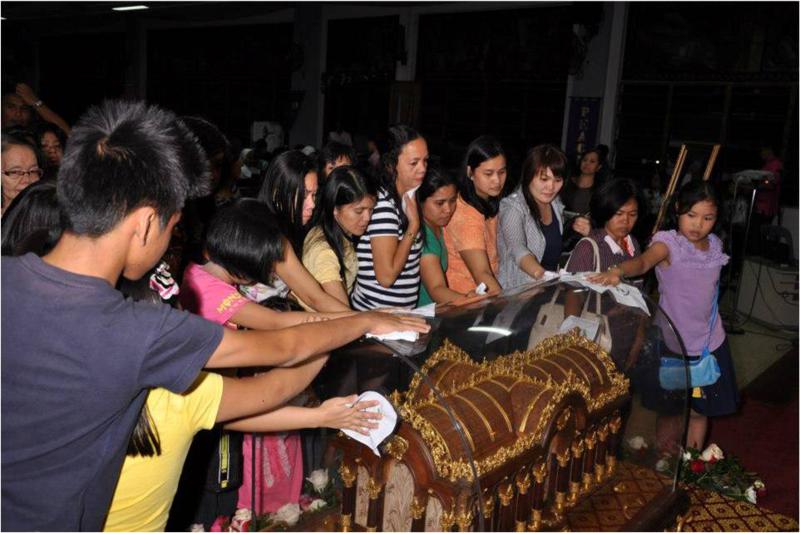 Photo courtesy of http://thereserelics.ph/
Photo courtesy of http://thereserelics.ph/
To read the story of the four-month visit to the Philippines and the chronicles of what happened in each diocese, please visit the official Web site for the visit of the relics and click on "Chronicles."
We join in thanksgiving with our sisters and brothers in the Philippines. Thanks be to God for all the graces God has poured out on their country through St. Therese.
Relics of St. Therese to depart from their third visit to the Philippines, April 14, 2013
The relics of St. Therese will leave the Philippines after a solemn Mass of Farewell on April 14, 2013. To see photos, film, news of the visit, and testimonies of the graces received by the people of the Philippines, please click on the photo.
The young man who proposed marriage to Celine Martin, sister of St. Therese of Lisieux, on April 9, 1888
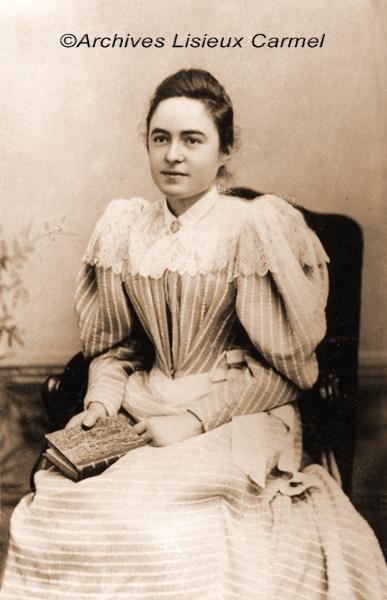 Celine Martin as a young woman
Celine Martin as a young woman
St. Therese entered the Carmelite monastery at Lisieux after the 7:00 a.m. Mass on Monday, April 9, 1888. But that was not the only momentous event in the life of the Martin family that day. That same evening Celine, Therese's eighteen-year-old sister, received an offer of marriage.
For more than a century the identity of Celine's first suitor remained unknown to the public. The first young man ever known to have proposed marriage to any of the Martin daughters, he was a Man of Mystery. I'd often wondered who he was and how he had become friends with the Martin family, who led a sheltered life at Lisieux. In 1997, when Bishop Guy Gaucher, O.C.D., whose knowledge of every detail of the family's life is unparalleled, spoke at a Carmelite conference at Marquette University, I asked him for the name of the young man who proposed to Celine the night after Therese entered. He answered "We don't know." Since then, further research has identified the suitor, for both the Web site of the Archives of the Carmel of Lisieux and Bishop Gaucher's exhaustive 2010 biography, Sainte Therese de Lisieux (1873-1897), divulge the name: Albert Quesnel.
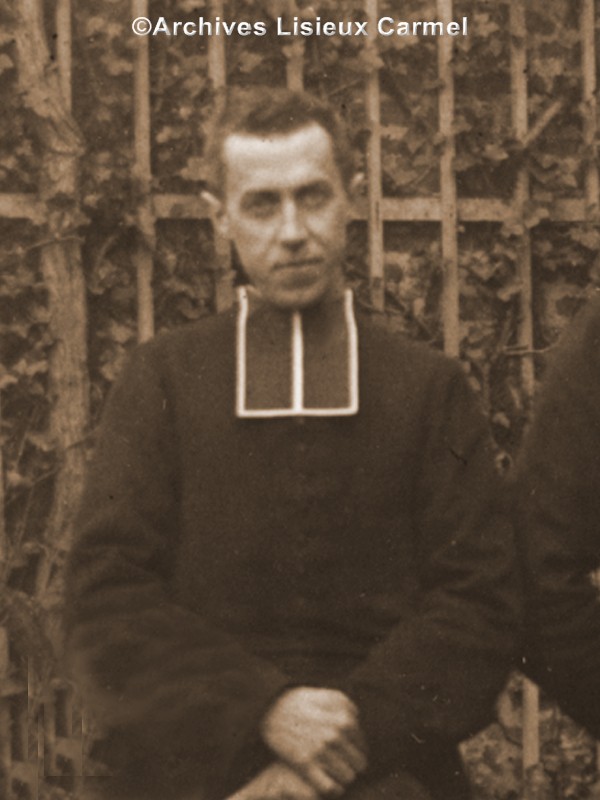 M. Albert Quesnel on March 27, 1893, almost five years after he asked Celine Martin to marry him
M. Albert Quesnel on March 27, 1893, almost five years after he asked Celine Martin to marry him
The Quesnel family, wealthy jewelers, were neighbors of the Martins. Their house, near Les Buissonnets, was also located in the parish of Saint-Jacques. Albert, their only son, was born July 16, 1858 at Lisieux, four days after the midnight wedding of Celine's parents, Louis and Zelie Martin, in Alencon on July 12, 1858. His family were close friends of the Martins, and he had known St. Therese during her childhood and until she became a Carmelite. He had given Celine advice in drawing and painting, in which he was gifted.
At the time he asked Celine to marry him, Albert Quesnel was twenty-nine years old. Although Celine did not seriously consider accepting him, his proposal upset her, making her question her religious vocation. Years later she wrote in her autobiography:
This piece of news distressed me, not that I was undecided as to what I had to do, but the divine light, in hiding itself from me, delivered me up to my own fickleness; I kept telling myself "Isn't this offer, which is made to me the instant Therese leaves me, an indication of God's will for me, which I hadn't foreseen?" The Lord may have permitted me this desire for religious life up until now so that, in the world, I might be a strong woman. So many people tell me I do not have the makings of a religious! Perhaps, indeed, I haven't been called to that life by Divine Providence. My sisters never had to choose formally between the two lives; doubtless, God wanted them for himself, and he does not want me! In short, although my resolution had never changed, my anguish kept mounting and mounting . . . . I could no longer see clearly. Yet, just in case, I responded that I was not willing, that I wanted to be left in peace for the time being, and that no one should wait for me.
(Celine: Sister and Witness of St. Therese of the Child Jesus, by Stephane-Joseph Piat, OFM. San Francisco: Ignatius Press, 1997, pp. 33-34).
Therese was not the only Martin daughter whose vocation was beset with trials!
After Celine refused his proposal, M. Quesnel decided to study for the priesthood. He continued to be friends with the Guerin family. Mme. Guerin mentions him in a letter, and on March 27, 1893, he was photographed while attending a reception at the Guerin home. See the group photograph at the Web site of the Archives of the Carmel of Lisieux.
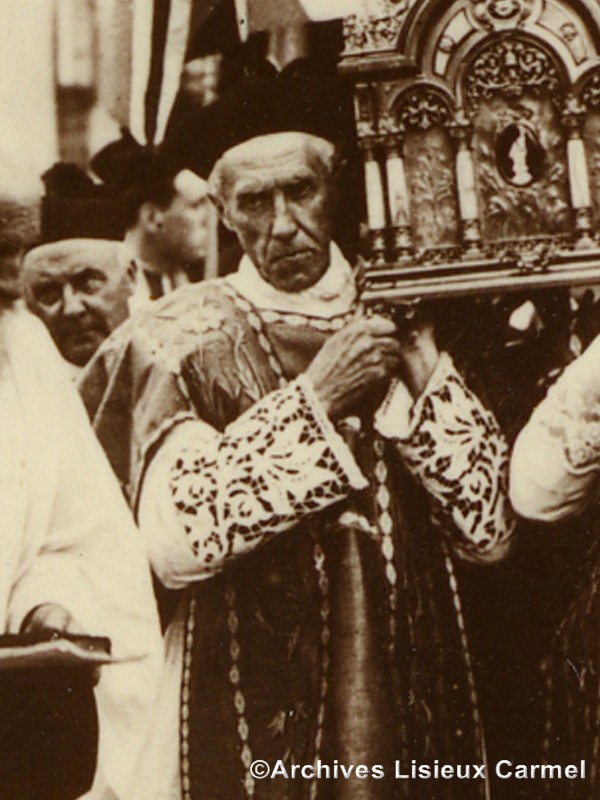 M. Quesnel carrying the reliquary of his former neighbor, little Therese Martin, who had become St. Therese of Lisieux
M. Quesnel carrying the reliquary of his former neighbor, little Therese Martin, who had become St. Therese of Lisieux
He was ordained, and he served as a parish priest in Ranville, where he died on May 11, 1935, and where he is buried. Celine, who entered the Carmelite monastery in Lisieux on September 14, 1894, more than six years after his proposal, outlived him by almost twenty-four years, dying on February 25, 1959.
Except the text from Celine cited to Piat, the information in this article is drawn from Bishop Gaucher's Sainte Therese de Lisieux (1873-1897) and from the Web site of the Archives of the Carmel of Lisieux. I thank the Archives for permission to display their photographs of M. Quesnel and of Celine. To see many more photos and documents, visit the archives Web site.
April 22, 2013: The album "Vivre d'Amour," the poems of St. Therese of Lisieux set to music by Gregoire and sung by Natasha St.-Pier, to be released
Natasha St. Pier singing Therese's poem "Jeter les fleurs" ("To scatter flowers") in the Basilica of St. Therese at Lisieux.
On April 22, 2013 the album "Vivre d'Amour," the poems of St. Therese of Lisieux set to music by Gregoire, will be released in France.
"Vivre d'Amour is a bold and singular project. It is also a project surprisingly created by the meeting of talents. And it is above all an encounter between a composer, Gregoire, and the poems written at the end of the 19th century by St. Therese of Lisieux, a Carmelite with an extraordinary destiny who died of tuberculosis in 1897 when she was only 24 years old. As a variation to the infinite that symbolizes Love, Therese's "Living on Love" is also an unusual project because of its collective dimension. Several artists accompany the singer Natasha St.-Pier on this album: Anggun on the first single "Vivre d'Amour" ("Living on Love"), Sonia Lacen on "Mes Armes" ("My Weapons'), Elisa Tovatoi on "Rapelle-toi" ("Remember"), and many other surprises.
The members of the Collective are: Natasha St-Pier, Anggun, Elisa Tovati, Sonia Lacen, The Stentors Gregory Turpin, Bishop di Falco Léandri, Michael Lonsdale, The Little Singers of the Wooden Cross, and Gregory.
[The above article is translated from Charts in France, accessed April 7, 2013].

